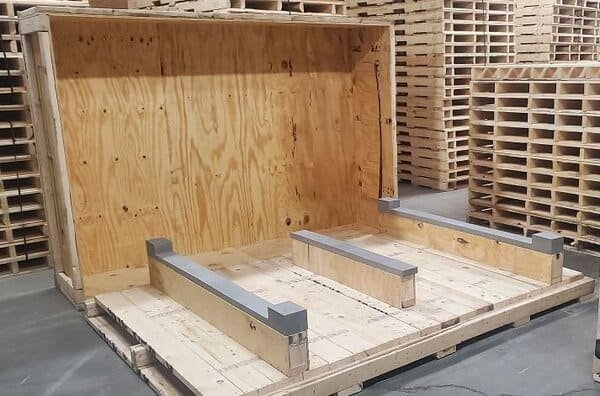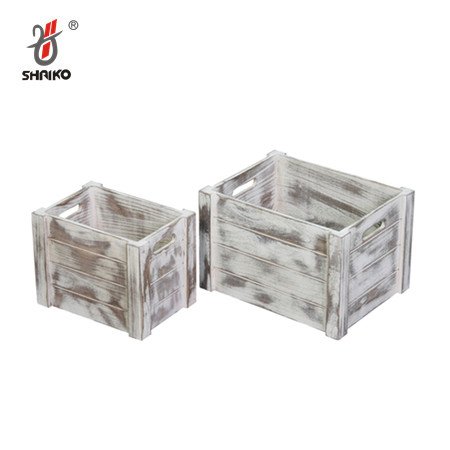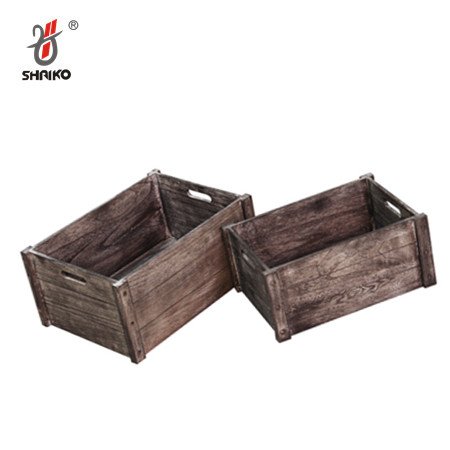
Wooden crates and wooden boxes may seem similar, but they serve different purposes and are built differently.
Wooden crates are typically used for heavy-duty shipping1, while wooden boxes are more versatile, and often used for storage or delicate items.
Let’s explore the key differences between a wooden crate and a wooden box, including their structure, use, and design.
What is the Difference Between a Wooden Case and a Wooden Crate?
Leading paragraph: A wooden case is often a more refined, enclosed structure, while a wooden crate is typically open and designed for sturdiness.
Wooden cases are designed for protection and often have a finer finish, while crates are built for strength and ventilation.

The primary difference between a wooden case2 and a wooden crate3 is their structure and intended use. Wooden cases are generally smaller, more enclosed, and are built to protect delicate items. They are often crafted with more attention to appearance and finish, making them ideal for storing or transporting valuable goods, such as electronics, artwork, or fine wine. A wooden case can be fully sealed, with reinforced corners and soft interiors to cushion the contents.
On the other hand, a wooden crate is typically larger and designed to handle heavier, bulkier items. Crates are often open or slatted, providing ventilation and reducing the risk of moisture build-up. They are used for shipping goods that need robust protection but are less concerned with aesthetic appeal. Wooden crates are often seen in industrial, agricultural, and commercial settings, carrying products like machinery, furniture, or even live animals.
Key Differences Between Wooden Case and Wooden Crate:
| Feature | Wooden Case | Wooden Crate |
|---|---|---|
| Structure | Enclosed with protective features | Open or slatted for ventilation |
| Finish | Often refined, suitable for display | Rougher, built for durability and strength |
| Intended Use | Protection of delicate or valuable items | Shipping bulky or heavy goods |
| Durability | Durable, but more for aesthetic appeal | Extremely durable, designed for rough handling |
What is the Difference Between a Shipping Crate and a Box?
While both are used for storage and transportation, shipping crates are typically designed for larger, heavier items compared to boxes.
Shipping crates are designed for heavy-duty transport, while boxes are more versatile for both light and heavy goods.

The difference between a shipping crate and a box lies largely in their size, strength, and intended use. Shipping crates are typically large and designed to handle heavy or irregularly shaped items. These crates are constructed with thicker wood, reinforced corners4, and sometimes metal bands to ensure that they can withstand the rigors of long-distance shipping. A shipping crate often includes ventilation or open slats5 to allow for air circulation, especially for perishable goods.
In contrast, a wooden box is much smaller and more versatile. Boxes are often used for both personal and commercial purposes, ranging from moving household items to storing delicate goods like jewelry or electronics. Boxes can be made from lighter wood or plywood and are more commonly used for packaging items in retail or shipping in smaller quantities. While wooden crates are specifically built for large-scale, heavy-duty shipments, wooden boxes are more often used in a variety of everyday settings.
Key Differences Between Shipping Crate and Box:
| Feature | Shipping Crate | Wooden Box |
|---|---|---|
| Size | Larger, designed for bulkier items | Smaller, often more compact |
| Strength | Built for heavy-duty, rough handling | Suitable for less demanding contents |
| Use | Shipping and transporting large goods | Storing or shipping a variety of items |
| Design | Reinforced with stronger materials | Lighter construction, more decorative |
What is a Wooden Box Usually Used to Transport?
Leading paragraph: Wooden boxes are commonly used to transport a variety of goods, including delicate and small to medium-sized items.
Wooden boxes are ideal for packaging fragile or valuable items, such as electronics or artwork.

Wooden boxes are versatile and can be used to transport a wide range of items. One of the most common uses is for shipping fragile goods. Electronics, glassware, and artwork are frequently transported in wooden boxes, as the wood provides a protective barrier against rough handling during shipping. The cushioning effect of the wood and, in some cases, added padding inside the box ensures that delicate items are less likely to be damaged.
Wooden boxes are also often used in retail packaging for luxury products6, where the aesthetic appeal of the wood complements the premium nature of the product. For example, high-end watches, jewelry, and even specialty food items such as chocolates or wine are often shipped in beautifully crafted wooden boxes. Additionally, wooden boxes are sometimes used for transporting small machinery7, tools, or equipment that require extra protection.
Common Items Transported in Wooden Boxes:
| Item Category | Example Products |
|---|---|
| Fragile Goods | Electronics, glassware, artwork |
| Luxury Products | Watches, jewelry, high-end food items |
| Small Machinery/Tools | Power tools, small equipment, mechanical parts |
| Retail Packaging | Specialty items, gifts, exclusive products |
Conclusion
Wooden crates are designed for bulkier and heavier shipments, while wooden boxes offer versatile, protective storage for both delicate and commercial goods.
-
Discover expert tips and strategies for optimizing heavy-duty shipping processes using wooden crates, ensuring your items are transported safely and efficiently. ↩
-
Explore how a wooden case can protect delicate items like electronics and artwork, ensuring safe transport and storage. ↩
-
Learn why wooden crates are ideal for heavy, bulky items, offering durability and ventilation for industrial and commercial use. ↩
-
Learn about the role of reinforced corners in ensuring the strength and longevity of shipping crates during transport. ↩
-
Discover the importance of ventilation in shipping crates for perishable goods and air circulation. ↩
-
Discover the aesthetic and protective benefits of wooden boxes for luxury items, adding value and appeal to premium products. ↩
-
Learn about the durability and protection wooden boxes offer for small machinery, safeguarding against transit damage. ↩

